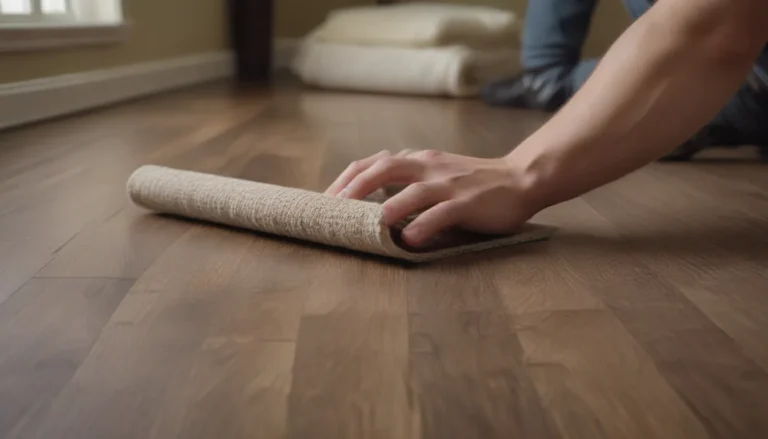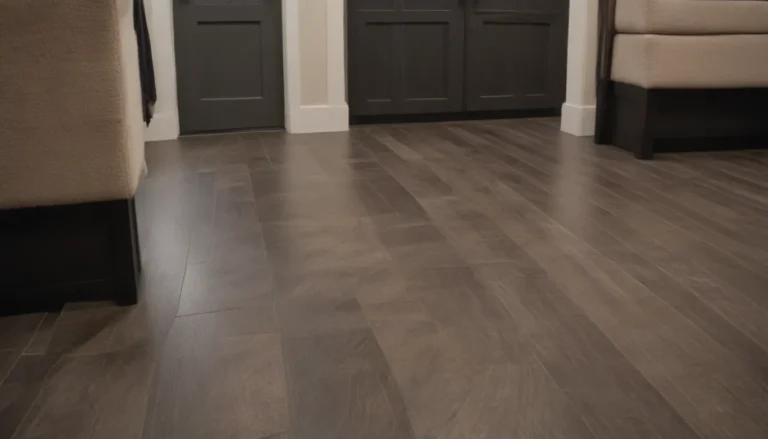The Importance of Tile Grout Sealants: Two Main Types and How They Work

Are you tired of scrubbing your tile grout endlessly to keep it looking clean and mold-free? If so, then it may be time to consider sealing your grout. Grout sealants not only make cleaning easier but also help extend the life of your tile by preventing water damage and mold growth. In this article, we will discuss the two main types of tile grout sealants and how they work to protect your tile surfaces.
Why Seal Your Tile Grout?
Before we delve into the different types of grout sealants, let’s first understand why sealing your tile grout is important. Grout, being a porous material, can easily absorb water, dirt, and grime, leading to discoloration, mold growth, and even structural damage to your tiles. By applying a grout sealant, you can create a protective barrier that prevents moisture from seeping into the grout pores. This not only helps maintain the cleanliness of your tiles but also prolongs their lifespan.
Benefits of Using Grout Sealants:
- Prevents water damage: Sealing your grout prevents water from seeping through the pores and reaching the back of your tiles, which can cause them to deteriorate.
- Prevents mold and mildew: By sealing your grout, you can inhibit the growth of mold and mildew in high-moisture environments like bathrooms and kitchens.
- Easier cleaning: Sealed grout is less likely to absorb dirt and grime, making it easier to clean and maintain.
- Improves longevity: Sealing your grout can help extend the life of your tiles by protecting them from water damage and other potential threats.
Now, let’s explore the two main types of tile grout sealants and how they are applied.
Sealing Grout With an Applicator
The first method of sealing grout involves using an applicator, such as a brush or roller, to apply the sealant directly to the grout lines. This method allows for more precise application and thicker coverage compared to spraying the sealant. Here’s how you can seal your grout using an applicator:
Steps to Seal Grout With an Applicator:
- Prepare the area: Make sure the grout lines are clean and dry before applying the sealant.
- Apply the sealant: Using a small brush or roller, apply the sealant directly to the grout lines, making sure to avoid getting it on the tile surface.
- Protect your knees: Consider using gardening knee pads or a folded-up towel to protect your knees while applying the sealant.
- Cover each line: Carefully brush or roll the sealant onto each grout line, ensuring complete coverage.
- Allow to dry: Let the sealant dry completely before exposing the grout to moisture.
Popular Brand:
- DuPont’s Grout Sealer: Effectively seals grout lines, with each 4-ounce bottle covering 30 linear feet. Brush tips tend to work better than foam roller tips for precise application.
Sealing grout with an applicator may be more labor-intensive, but it allows for targeted application and thicker coverage, which can provide better protection for your grout and tiles.
Sealing Grout by Spraying the Entire Surface
The second method of sealing grout involves spraying the sealant over the entire surface, allowing it to penetrate the grout pores and create a protective barrier. While this method may be less precise than using an applicator, it is quicker and easier to apply. Here’s how you can seal your grout by spraying the entire surface:
Steps to Seal Grout by Spraying:
- Clean the area: Ensure the grout lines are clean and free of debris before applying the sealant.
- Spray the sealant: Use a spray bottle or aerosol can to spray the sealant over the entire surface, including the grout lines and tile faces.
- Allow to dry: Let the sealant dry completely before using the tiled surface.
Recommended Product:
- Push-button aerosol sprays tend to produce a finer, more consistent mist with fewer drips than hand pump sprays, making them easier to use for spraying grout sealant.
Spraying the entire surface with grout sealant may be more convenient and require less effort, but it is important to ensure complete coverage and avoid getting the sealant on areas that do not need to be sealed.
How Grout Works and How Grout Sealant Works
Now that we’ve covered the two main types of tile grout sealants, let’s discuss how grout works and how grout sealant works to protect your tiles.
How Grout Works:
- Grout is a porous material applied between tiles to fill the gaps and provide structural support.
- It prevents debris from entering the seams between tiles and helps hold the tiles together.
- Grout also adds to the aesthetic appeal of tiles, especially when color-tinted for a decorative effect.
How Grout Sealant Works:
- Grout sealant creates a protective barrier that prevents water, dirt, and grime from penetrating the grout pores.
- By sealing the grout, you can inhibit mold and mildew growth, extend the life of your tiles, and make cleaning easier.
- Sealing grout is especially important in high-moisture environments like bathrooms and kitchens to prevent water damage and maintain the integrity of your tiles.
In conclusion, sealing your tile grout is an essential step in tile maintenance that can save you time and effort in the long run. Whether you choose to apply the sealant with an applicator or by spraying the entire surface, make sure to follow the recommended steps for proper application and ensure thorough coverage. By sealing your grout regularly, you can protect your tiles from water damage, mold growth, and other potential threats, ensuring they stay looking clean and beautiful for years to come.





